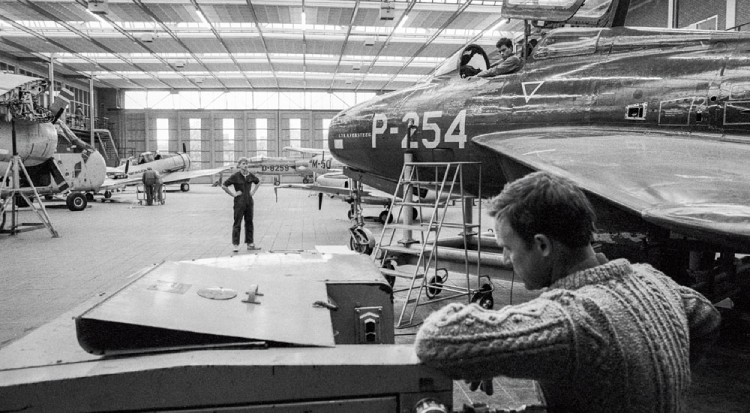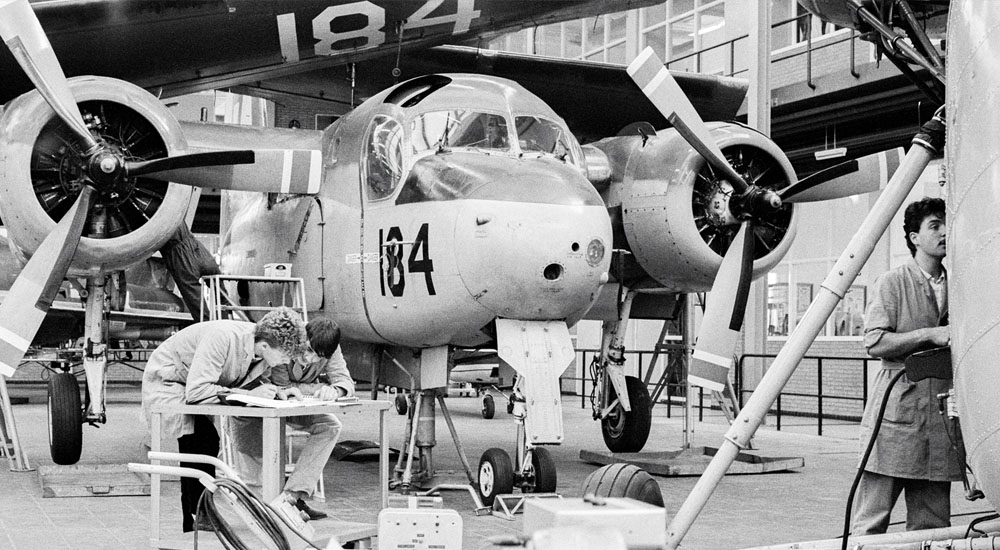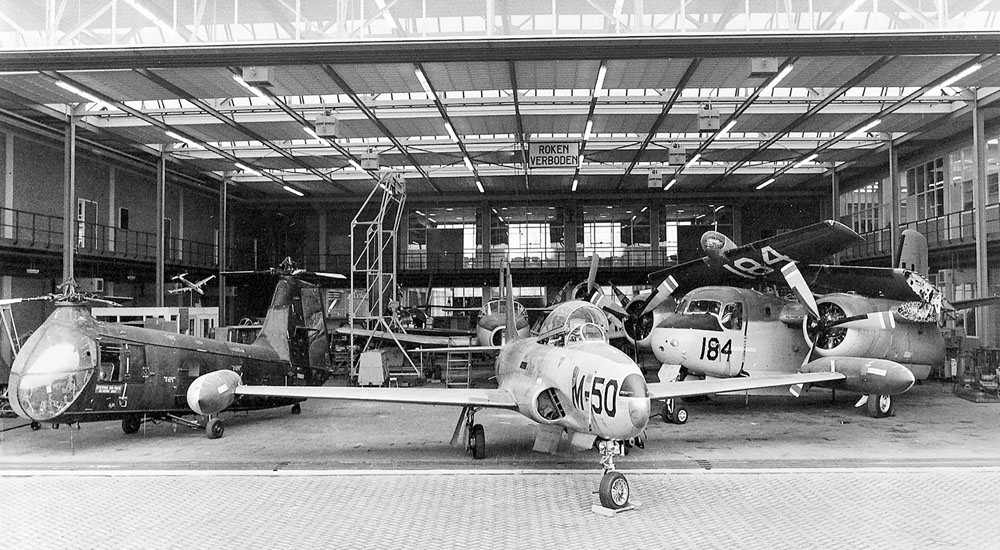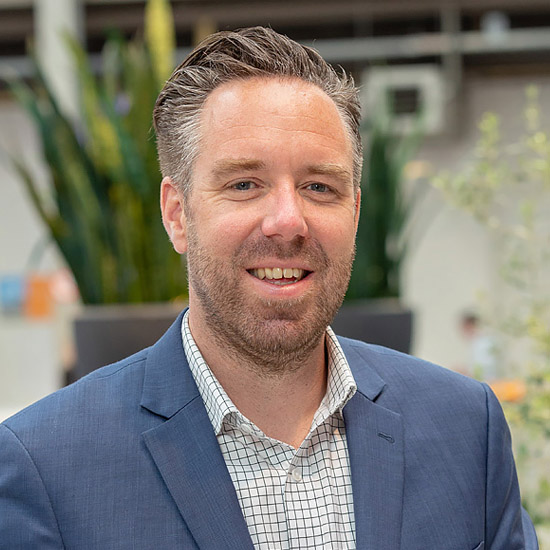



The economy was powering ahead in the period from 1948 and 1962: industrial production doubled and the Netherlands was well on track to becoming the modern society you see today. People started holidaying abroad and demand for air travel increased rapidly.

Anthony Fokker School
Schiphol quickly developed into a recognised international hub airport, with the Dutch aviation sector developing in tandem. The demand for skilled aircraft technicians exploded, encouraged by government policy of the day. New students’ interest was fired up, and the aviation technical school at the Zeezwaluwhof in Scheveningen quickly became too small. Plans were put in place to create a new, modern school building at the Binckhorst and architects F.C. de Weger and W. Zonneveld were tasked to come up with the designs. The school for aviation technology moved into its new accommodation at Binckhorstlaan 249 in 1961. The initial batch of 300 students were delighted with their new accommodation and, given the abundant space now available, student numbers rapidly increased.
The distinctive building consisted of a 1,200 m2, 9m-high hangar, skirted by classrooms. Students were free to hone their skills on aircraft in the assembly hall. The classrooms opened directly onto the technical spaces; this was an essential element of the educational philosophy that inspired the building.
In 1966 the school board decided to rename the school the Anthony Fokker School (AFS). The Fokker company had on numerous occasions bailed the school out when it had found itself in financial deep water.
With student numbers rising, space at this school ran out quickly. By 1984, with the school roll now 500 students, a start was made on expanding the building, increasing the space by forty percent. The hangar was expanded to 2000 m2, with the addition of extra classrooms. The extension was completed in 1986, once again allowing student numbers to increase. By 1990 the AFS had 692 male and 13 female students.
The aviation industry continued to expand at speed. To keep pace, the Dutch government put in motion plans for an even larger school in Hoofddorp in 1990, a school capable of providing the aviation sector with 1000 graduates annually. In 1994 the students moved to the Dutch Aviation College (ROCvA) in Hoofddorp and the name Anthony Fokker School was dropped.
Between 1994 to 2006 the building fulfilled numerous functions, including as a practical education centre (Elsloo Praktijkonderwijs) and a workplace/studio for various projects.
In October 2008 the ARTI art fair was the first trade fair to be held at the AFS, attracting 7500 visitors in five days. The building, which by this point was scheduled for demolition, suddenly once again basked in a positive glow and attracted the attention of an impressed city council of The Hague. LM+MC (the current operator) carried out market research into the feasibility of redeveloping the building as an events venue for the commercial market, which resulted in positive feedback. The complex was renovated in 2009 and renamed Fokker Terminal. The venue has since grown in stature to become a leading conference and event location with national appeal.
Source:
Source:
Een werkplaats voor de toekomst – Anthony Fokkerschool 1936-1993, Marck Dierikx and Ernest Hueting; published by Matrijs, 2000; ISBN 90 5345 161 7.

Martijn Kousen
Sales & Event Manager
+31 (0)70 - 262 90 66

Ralph Dik
Sales & Event Manager
+31 (0)70 - 262 90 66

Tim Rosman
Sales & Event Director
+31 (0)70 - 262 90 66